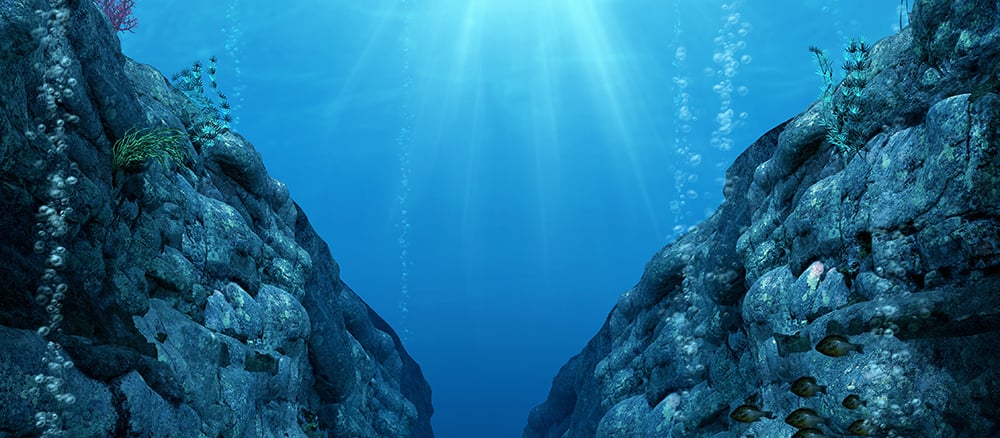Plastic – It’s Deeper Than You Think

We have all heard stories about how plastic is affecting planet Earth. It is in the oceans, on beaches and is being washed up on remote islands. There are even reports that it is airborne, reaching the most isolated and out-of-the-way parts of the world.
Plastic pollution affects marine life. There are countless reports of whales being washed up on shores with plastic in their gut, there are photographs of turtles entangled in plastic debris such as carrier bags and straws and there are stories of hermit crabs becoming trapped after mistaking washed-up plastic bottles for potential new homes. But this is just what we see on the surface.
The Deepest Depths of the Ocean
The bottom of the ocean is still poorly explored, requiring extremely specialist equipment to cope with the extreme pressure and lack of light. Despite this, the handful of expeditions that have made it down to the deepest parts of the ocean have still uncovered traces of human existence.
Way down below the surface of the water, new species are regularly encountered. In a recent trip, 20,000 feet below the surface in the Mariana Trench (the deepest point on the Earth’s surface, reaching more than 36,000 feet deep) British researchers found a new species of amphipod. Despite being found 20,000 feet below the surface of the Pacific Ocean, the researchers were able to identify pieces of polyethylene-terephthalate (PET) in the guts of the two-inch, shrimp-like creature and so named it Eurythenes Plasticus.
Eurythenes Plasticus
The name given to this new discovery was done so in an attempt to draw attention to the increasing problem of plastic pollution and its environmental effects. This discovery highlights that we are now at the point where new species from unexplored habitats are already contaminated with plastic.
How Does the Plastic Get into the Ocean?
Over 350 million tonnes of plastic was produced in 2018. Anything that is not reused or properly recycled ends up in rivers that transport it to the oceans. The perpetual motion of the waves breaks down plastic into very small pieces of plastic (microplastic). These microplastics are then distributed worldwide by marine currents. Inevitably, animals feeding in the sea ingest these plastics, including the potentially toxic compounds that come with them.
The discovery of Eurythenes Plasticus further highlights the need to take action against single-use plastic. We must all do what we can to reduce, reuse and recycle before we do even more damage.
Global Office Supplies is on a mission to help companies go green. We can help you reduce your impact on the environment by supplying green office supplies, print management and recycling services.
Get in touch today to find out more about how we can help your office go green: